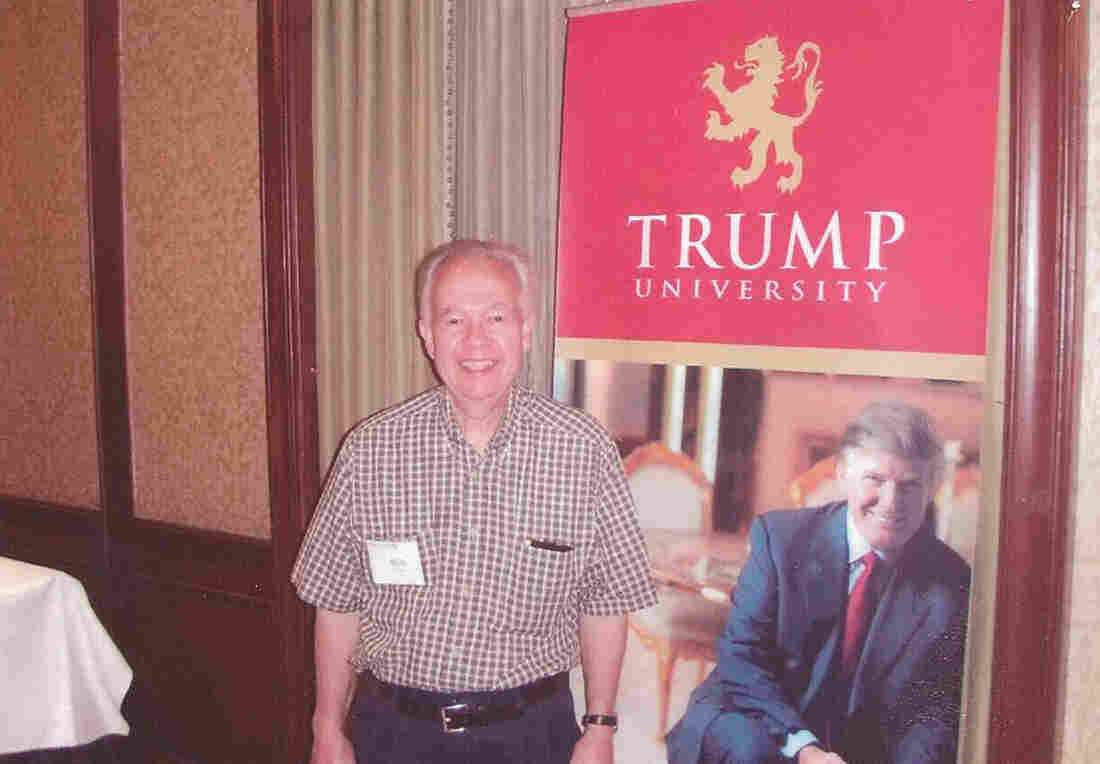Safety Regulator Looks At Alleged Tesla Suspension Flaw
A Tesla Model S on display at the Frankfurt Auto Show in 2015. Safety regulators are looking into a report of a possible safety issue with the suspension on the Model S. Tesla denies that there is any safety problem. Michael Probst/AP hide caption
toggle caption Michael Probst/AP
Tesla says its cars’ suspension systems have no safety problems, and the electric automaker calls an allegation that it has pressured customers not to report safety problems “preposterous.”
The National Highway Traffic Safety Administration says it is looking into reports of a suspension system failure on Tesla’s Model S vehicles. The New York Times reports that since October, NHTSA has received 33 complaints of suspension parts breaking.
One account of the problem came from a Tesla owner going by the name “gpcoraro” on a Tesla blog. He said he was driving slowly, about 5 mph, in his Model S:
The road was rough so my air ride was at it max lift. As I was proceeding down a steep hill I heard a snap and felt my steering wheel pull to the left. I stopped the car for further inspection only to discover that my left front hub assembly separated from the upper control arm. Needless to say the car was inoperable due to a loss of steering. Thank goodness I was not traveling at a high rate of speed. This could of been a tragic accident causing injury or even death.
Tesla said in a statement, “There is no safety defect with the suspensions in either the Model S or Model X.”
Tesla says since it operates all its own service facilities, it tracks potential safety issues very closely. And the carmaker suggested in its statement that this appeared to be a one-of-a-kind situation based on the treatment of the car by the customer:
The suspension ball joint experienced very abnormal rust. We haven’t seen this on any other car, suggesting a very unusual use case. The car had over 70,000 miles on it and its owner lives down such a long dirt road that it required two tow trucks to retrieve the car. (One to get the car to the highway and one to get it from the highway to the service center.) When we got the car, it was caked in dirt.
But whether or not there is a legitimate safety question to be examined here, another issue apparently is troubling to regulators: the allegation that Tesla has been trying to induce or pressure its customers to keep quiet about potential safety issues when they arise.
After the customer “gpcoraro” notified Tesla that his suspension snapped, he says Tesla told him the parts were not under warranty. But, he said in a blog post that Tesla offered to pay for half of the $3000 repair, but only if the customer signed an agreement.
The customer posted the agreement online that he says Tesla sent him, which included this prerequisite:
You agree to keep confidential our provision of the Goodwill, the terms of this agreement and the incidents or claims leading or related to our provision of the Goodwill.
The customer took that to mean basically, we’ll give you $1500 toward your car repair if you keep quiet about this problem you had.
Tesla counters in its statement that the agreement does not represent an attempt to keep customers from reporting safety problems. “Tesla has never and would never ask a customer to sign a document to prevent them from talking to NHTSA or any other government agency.” Tesla says that idea is “preposterous.”
Tesla says when it offers to pay for a repair that’s not covered by warranty, that the company sometimes asks customers to sign a “Goodwill Agreement.” Tesla says, “The basic point is to ensure that Tesla doesn’t do a good deed, only to have that used against us in court for further gain.”
For its part, the NHTSA says this in a statement:
NHTSA is examining the potential suspension issue on the Tesla Model S, and is seeking additional information from vehicle owners and the company.
An NHTSA spokesman Bryan Thomas said Tesla’s nondisclosure agreement is “troublesome.” His statement continues:
The agency immediately informed Tesla that any language implying that consumers should not contact the agency regarding safety concerns is unacceptable, and NHTSA expects Tesla to eliminate any such language. Tesla representatives told NHTSA that it was not their intention to dissuade consumers from contacting the agency. NHTSA always encourages vehicle owners concerned about potential safety defects to contact the agency by filing a vehicle safety complaint at SaferCar.gov.
Tesla says it meets regularly with safety regulators and in the past has performed voluntary recalls even when there is only a “slight” risk of a safety issue.











